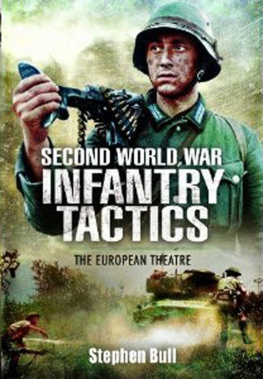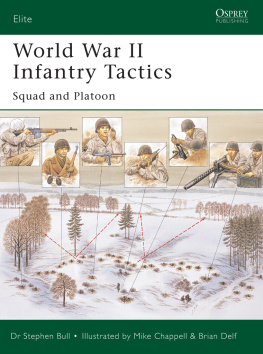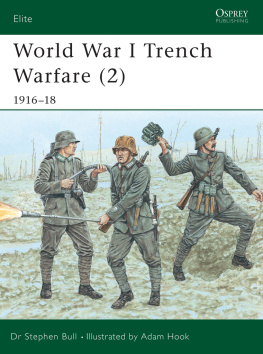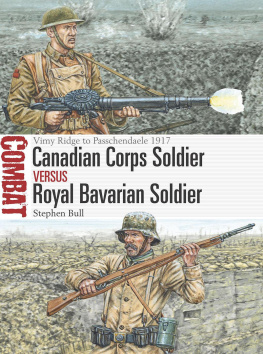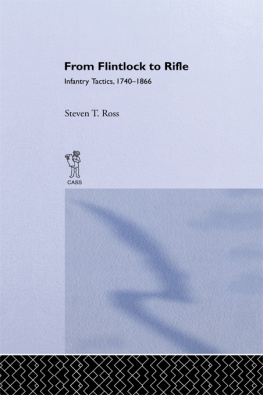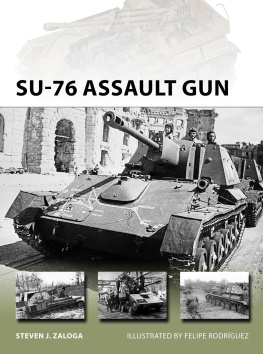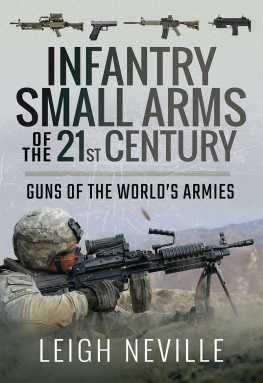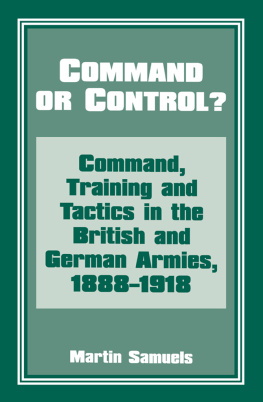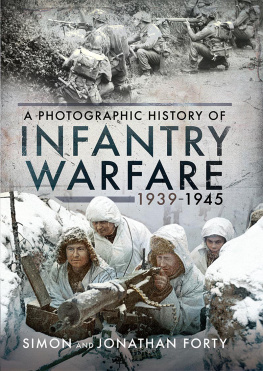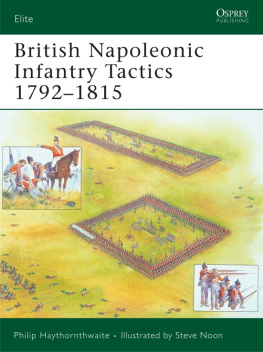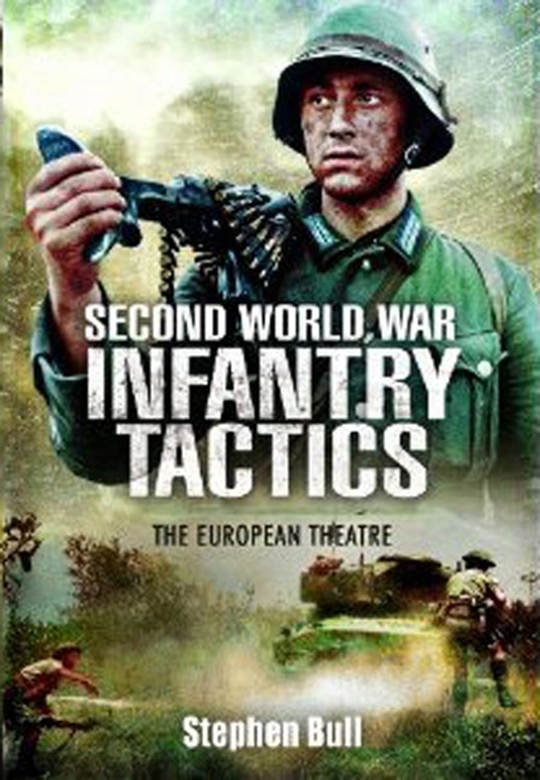Scale of Ammunition Distribution in German Rifle Companies, From Handbook of the German Army , 1940
Rifle: 90 rounds (40 more in company and battalion reserve).
Machine Pistol: 192 rounds in 6 magazines.
Light Machine Gun: 3,100 rounds (divided between gun team and reserves).
Heavy Machine Gun: 5,250 rounds (divided between company limbers and reserves).
Pistol: 32 rounds.
Ammunition replacement was carried out continuously as required being delivered from transport echelons to the light infantry column, then to battalion and company reserves, and finally to the individual soldier.
Appendix 4
British Issue of Battalion Weapons, Vehicles, and Ammunition, From Provisional War Equipment Table for an Infantry Battalion , 1941
Strength
Battalion comprises: 4 Rifle Companies (4 x 124 personnel); Rifle Companies organised as 3 platoons of 3 sections each.
1 HQ Company (235 personnel including Corps attachments and Carrier Platoon).
1 Battalion HQ (54 personnel).
First-line reinforcements (157 personnel).
Arms and Ammunition
Rifles: 868 .303 SMLE Mk III* or Mk III (or Pattern 1914 Enfield).
Bayonets: 862 (to match the above).
Sniper rifles: 8 No. 3 Mk I (and bayonets).
Bren guns: 58 (with bipod, plus 58 spare barrels and 1,450 magazines).
Bren mounts: 62 (58 tripods, 4 twin AA, plus 8 x 100 round magazines).
Machine Carbines: 42 (Thompson .45, SMG).
Anti-tank Rifles: 25 (Boys .55, plus 200 magazines).
Dischargers: 24 (for rifle grenades).
Mortars 2in: 16 (with 1,152 HE bombs).
Mortars 3 in: 6 (with 936 bombs, smoke and HE).
Pistols: 53 (revolvers).
Signal Pistols: 38 (with 372 cartridges and 360 reserve).
Grenades: 732 (various types).
Ammunition .303: 42,800 rounds (bandolier packed); 70,000 rounds (reserve bandolier packed); 75,000 rounds (general reserve); and 12,000 rounds (tracer).
Ammunition .380: 636 rounds (for revolvers); and 282 rounds (reserve).
Ammunition .45: 25,200 rounds (for Thompson SMG).
Ammunition .55: 6,000 rounds (Boys AT Rifle).
Dummy cartridges: 40 various.
Vehicles
Bicycles: 31.
Cars, two-seater: 6.
Cars, four-seater: 1.
Chaplains car: 1.
Lorries, 30cwt: 1.
Lorries, 3 ton: 13.
Trucks, 15cwt: 32.
Trucks, personnel: 2.
Trucks, water: 1.
Motorcycles (solo): 23.
Motorcycles (combination): 4.
Universal carriers (tracked): 14 (for carrier platoon HQ company).
Universal carriers (tracked): 7 (fitted for 3in mortars HQ company).
Appendix 5
British Combat Section, From the Manual Light Machine Gun , 1942
Section Commander: machine carbine (SMG) with 6 magazines and 3 magazines for Bren, wire cutters, machete or knife, and whistle (total weight carried inclusive of clothing and equipment 65lb).
No. 1 Rifleman: sniper rifle, 50 rounds, bayonet, 4 Bren magazines (weight 61lb).
No. 1 Bomber: rifle, 50 rounds, bayonet, 1 Bren magazine, 2 No. 36 grenades, 2 smoke grenades (weight 61lb).
No. 2 Rifleman: rifle, 50 rounds, bayonet, 4 Bren magazines (weight 61lb).
No. 2 Bomber: rifle, 50 rounds, bayonet, 3 Bren magazine, 2 No. 36 grenades (weight 61lb).
Second in Command: rifle, 50 rounds, bayonet, 2 Bren magazine, 2 smoke grenades (weight 65lb).
No. 1 Bren: Bren gun, 4 Bren magazines, plus 50 rounds, spare parts wallet (weight 75lb).
No. 2 Bren: rifle, 50 rounds, bayonet, 4 Bren magazines in utility pouches (weight 63lb might also carry spare Bren barrel).
NB According to Army Training Memorandum 38 of 1941, the eight-man battle section was usual for action but the higher war establishment was one corporal and ten men. The additional men ensured that the basic strength of one corporal and seven men can be maintained during the absence of personnel due to sickness, leave and other causes... the additional men may be employed on working parties and other duties. In the Instructors Handbook of October 1942 three sections virtually identical to the one given here, plus a platoon HQ, comprised the battle platoon. The HQ consisted of the commander, platoon sergeant, a two-man AT Rifle team, a two-man mortar team, a runner, and a batman who also doubled as mortar-bomb carrier. The platoon was therefore thirty-two all ranks.
Appendix 6
German Infantry Platoon, From The Regimental Officers Handbook of the German Army , 1943

